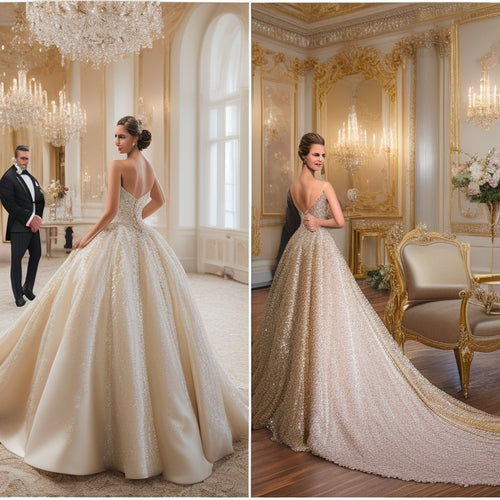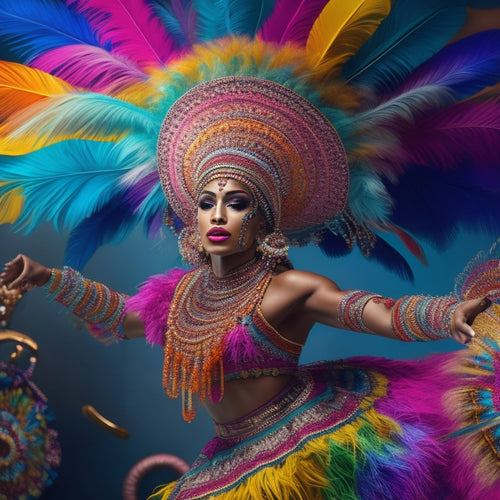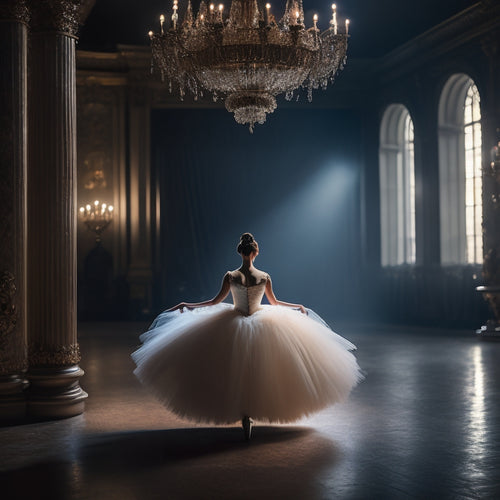
Revolutionize Dance: Masterful Choreography Insights Unveiled
Share
Effective choreography demands a profound understanding of the human body's three-dimensional capabilities, transcending traditional two-dimensional design to reveal visually striking movements that showcase the body's full expressive potential. By embracing spatial dynamics and forsaking symmetry, choreographers can create visually enthralling pieces. Understanding the creative process, defining a clear concept, and experimenting with movement are essential in mastering dance composition. Additionally, incorporating innovative techniques, reflecting on chaos, contrasts, and space, and leveraging expert insights can refine artistic vision and elevate dance pieces. As you explore these principles, discover how to reveal the full potential of your choreography.
Key Takeaways
• Embracing three-dimensionality and spatial dynamics can create visually striking movements that celebrate the human body's full range of motion.
• Defining a clear concept and experimenting with movement can guide the creative process and develop a unique language.
• Incorporating innovative techniques and artistic expression can break monotony and enhance choreographic craft.
• Understanding the creative process and refining artistic vision through reflection on chaos, contrasts, and space optimizes overall impact.
• Forsaking symmetry and two-dimensionality opens up new possibilities for creative expression and masterful choreography.
Choreography Principles Unveiled
Rarely do choreographers deliberately craft movement that appears stagnant, yet unwittingly, they often succumb to the pitfalls of symmetry and two-dimensional design, neglecting the inherently three-dimensional nature of the human body. This oversight can lead to static and uninspiring choreography.
To innovate dance, choreographers must embrace creative movement that celebrates the body's three-dimensionality. By leveraging spatial dynamics, choreographers can create dynamic, visually striking movements that captivate audiences.
By forsaking symmetry and two-dimensionality, choreographers can open up new possibilities for creative expression, fostering a sense of freedom and fluidity in their work.
Mastering Dance Composition Essentials
Frequently, a dance's overall impact is compromised by its length, with even the most engaging choreography suffering from excessive duration. Mastering dance composition essentials is vital to avoid this pitfall.
Essential techniques in dance composition involve understanding the creative process, which includes conceptualizing, experimenting, and refining.
To achieve mastery, choreographers should:
-
Define a clear concept: Establish a strong idea or theme to guide the creative process.
-
Experiment with movement: Explore different styles, techniques, and dynamics to create a unique language.
-
Develop a cohesive structure: Organize the dance into introduction, development, and conclusion to create a sense of progression.
- Refine and edit: Continuously refine the choreography, making adjustments to timing, pacing, and overall flow.
Elevating Dance With Expert Insights
As choreographers master the fundamentals of dance composition, they can enhance their craft by incorporating expert insights that address common pitfalls and optimize the overall impact of their work.
By embracing innovative techniques and artistic expression, choreographers can break free from monotony and create a lasting performance impact.
A deep understanding of the creative process is essential to crafting a cohesive and engaging dance piece.
By reflecting on the constituents of chaos, the value of contrasts, and the impact of space, choreographers can refine their artistic vision and elevate their craft.
Frequently Asked Questions
How Do I Balance Creative Vision With Audience Expectations?
Balancing creative vision with audience expectations requires managing artistic freedom, audience feedback, and creative constraints. By embracing viewer anticipation, choreographers can strike a delicate balance, ensuring their vision resonates with the audience while maintaining artistic integrity.
What Role Does Cultural Context Play in Modern Dance Choreography?
Cultural sensitivity is essential in modern dance choreography, as it honors traditional roots while avoiding appropriation. Choreographers must thoughtfully navigate cultural exchange, ensuring respectful representation and avoiding stereotyping, to create authentic and impactful works that resonate with diverse audiences.
Can I Successfully Merge Different Dance Styles in One Piece?
When merging different dance styles, employ fusion techniques to harmonize disparate elements, mitigating style clashes through thoughtful choreographic choices that respect each style's essence, ensuring a cohesive and innovative artistic expression.
How Important Is Storytelling in Contemporary Dance?
In contemporary dance, storytelling is essential, as it weaves narrative threads that evoke emotional resonance, allowing audiences to connect with the performance on a deeper level, fostering a richer and more impactful experience.
Should I Prioritize Technical Skill or Emotional Expression in Dancers?
'What lies at the intersection of technical precision and emotional authenticity? As dancers navigate the vulnerability threshold, they must balance expressive constraints with physical limitations, cultivating artistic maturity to overcome performance anxiety and reveal authentic movement.'
Related Posts
-

7 Formal Dance Dresses for Black-Tie Events
For your next black-tie event, consider these seven stunning formal dance dresses that promise to turn heads. A class...
-

Moo! Unveiling Latin Dance Culture Sensation
Latin dance culture is a vibrant phenomenon that embodies the essence of identity, community, and self-expression, re...
-

Unveiling Ballet: Insider Insights on Dance World
Ballet, an art form esteemed for its elegance and beauty, conceals a world of rigorous dedication, meticulous plannin...


